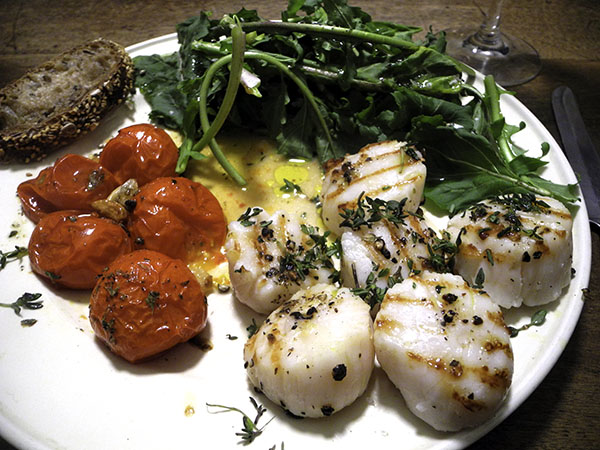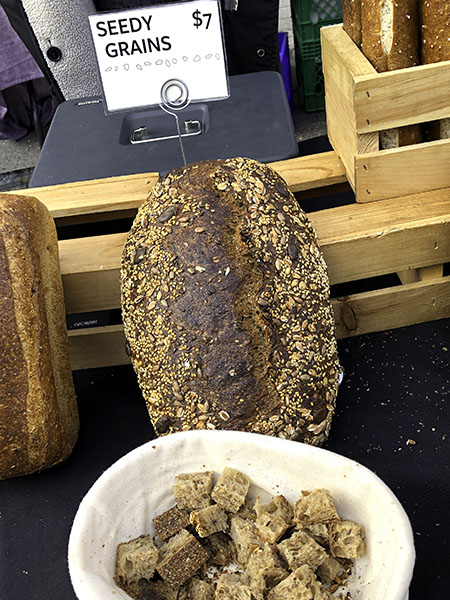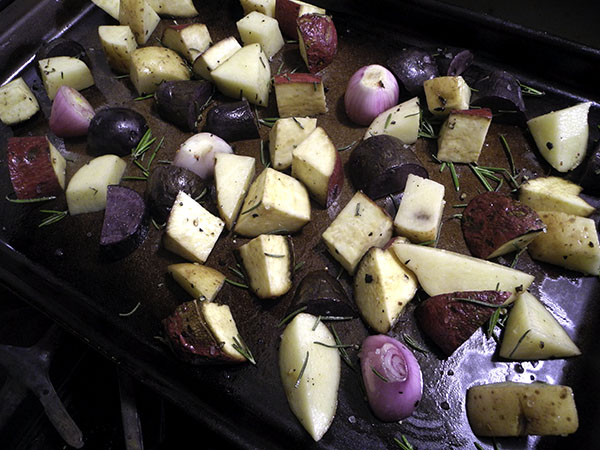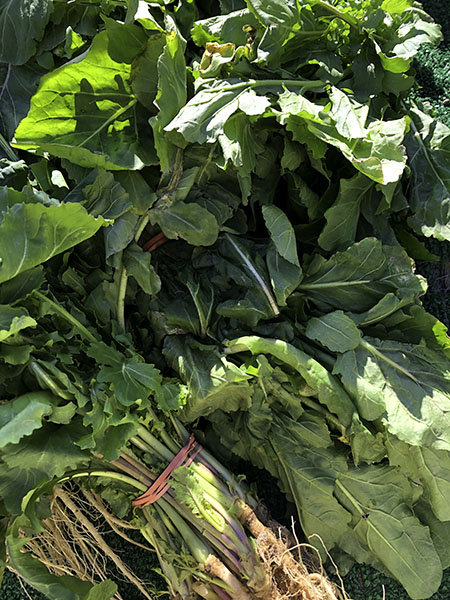
Chicken. Except that it’s not just chicken. It’s poussin. It’s a French thing, although it had a German-American accent on Saturday night.
Poussin are almost unheard of in US food emporiums today, if they ever were, and I haven’t even been able to find them in the large New York greenmarket where I get almost all of our comestibles.
Inside my much-warn copy of her book, ‘Mastering the Art of French Cooking’, Julia Child says that ‘squab chicken’, or ‘baby broiler’, was the American equivalent for the French poussin, or coquelet, (a young male chicken, because females, well, are more valuable alive, as with most domestic animals) but she wrote more than half a century ago, when you might have still been able to spot unusual items even in a grocery store (I know, since my first job was stock/bag boy in our local little supermarket, Nino’s, on Detroit’s far east side, well before she wrote the book, and they had almost everything).
Which brings me to the birds we enjoyed last night. I had noticed on a previous visit to Ottomanelli & Sons, on Bleecker Street in the Village, that they had frozen poussin inside the freezer in the front part of the shop; our own freezer was full, so I made a mental note to go back after the holidays. A gift of a special wine from a friend inspired an occasion. When I was there on Friday to find something to pair with the Cote de Beaune, I learned that they had unfrozen birds as well. The outlines of Saturday’s dinner had just come together.
There was an appetizer that was definitely a northern Italian diversion.
- two or three ounces of Giorgio’s coppa picante from Eataly Flatiron, drizzled with a little olive oil, Badia a Coltibuono (Chianti Siena Italia) from Chelsea Flatiron
- micro red chard from Two guys from Woodbridge
- slices of a loaf of ‘Seedy Grains’ from Philadelphia’s Lost Bread Company in the Union Square Greenmarket
The rest of the meal, roasted squash, sunflower sprouts, braised red cabbage, shifted most of the vibe still further from France, but we kept the Burgundy wine.
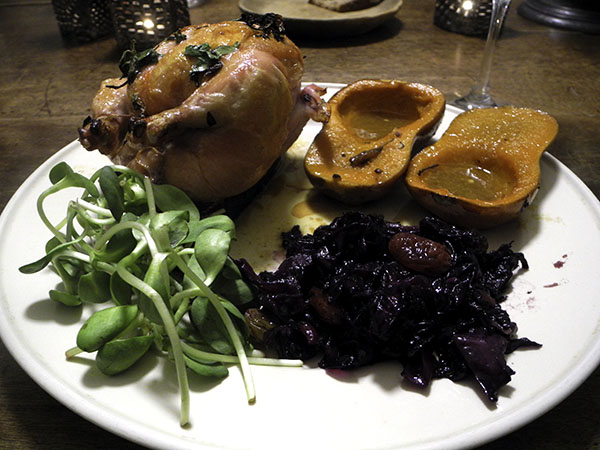
- two 20-ounce local poussin (Griggstown Quali Farm, Inc., Princeton, NJ) from Ottomanelli’s in the West Village, rinsed under cold running water, then dried, brought to room temperature, their cavities first seasoned with sea salt and freshly-ground black pepper then rubbed with a very small amount of olive oil before inserting inside each an organic Whole Foods Market lemon quarter, 2 small sprigs of Goodness Gardens thyme from the Chelsea Whole Foods Market; 2 sprigs of oregano from Philipps Farms; 2 sprigs of a Mexican-grown (my mistake: I misread its origin on the label) Goodness Gardens tarragon, also from Chelsea Whole Foods Market; and one crushed Keith’s Farm rocambole garlic clove, then the skin carefully loosened from the breast of both poussin, a sprig each of thyme, oregano, and tarragon inserted between it and the breast itself, half a tablespoon of Courvoisier V.S. cognac spooned into the same breast pockets, the birds trussed with kitchen string and each arranged on top of a thick piece of a She Wolf Bakery miche inside a small oval enameled cast iron pan, roasted inside a 500º oven for about 45 minutes, or until an instant-read thermometer piercing the center of a thigh registered 165º, or, alternatively, when the juices ran clear if a thigh were pierced with a trussing pin or needle, arranged on the plates still sitting on top of the (now dar, toasted and very savory) bread, finished with the pan juices, after the addition of a couple tablespoons of butter were stirred in along with the few herb leaves that hadn’t made it inside of the birds earlier, poured over the top
- a small handful of sunflower sprouts from Windfall Farms
- two very small ‘honeynut squash’ from Samascott Orchards, scrubbed, halved, the seeds removed, placed cut-side up in a baking dish, and a mix of almost 2 tablespoons of maple syrup, an equal amount of fresh water, the zest and juice of less than half of a lemon, a bit of dried habanada pepper, and a pinch each of salt and black pepper brushed or poured over the top, the surfaces dotted with less than 2 tablespoons of softened butter and placed inside a 375º oven to be baked for 15 or 20 minutes, the squash then flipped over and the cooking continued, basting halfway through that period, until caramelized and tender, or about 20 more minutes [all of this was completed before roasting the poussin, in a much hotter, 500º oven, the squash kept warm and returned to the oven briefly while the birds and their sauce were finished outside], arranged on the plates where their hollows served essentially as edible sauce boats for their pan juices
- a quantity of rich, complex-flavored cooked red cabbage that had remained from an earlier meal, of venison, a bit of fresh water added to it, heated gently and stirred
- the wine was a pretty special French (Burgundy/Volnay) red, Michel Lafarge – Volnay 2013, from Chelsea Wine Vault
There was no dessert (just look at the picture of the generous entrée for cause), but we did share a little grappa that had been sitting around the apartment for years.




